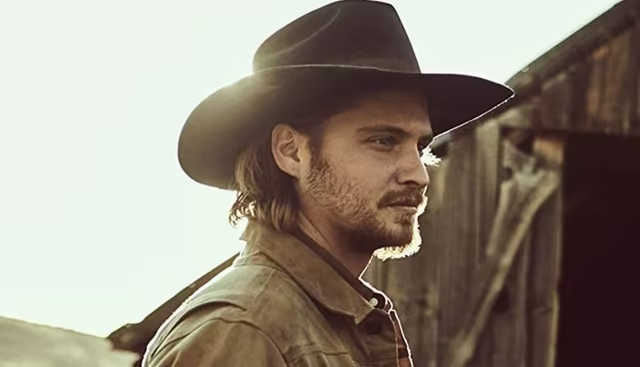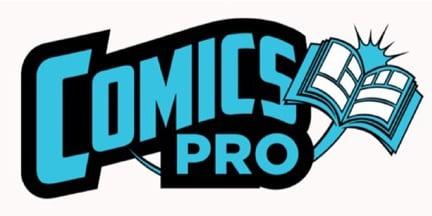If you click on a link and make a purchase we may receive a small commission. Read our editorial policy.
How to watch every Batman movie (and spinoff) in order, from Adam West to Robert Pattinson
Batman has been a mainstay fixture of movies and television for decades, and here's your watch guide for everything Dark Knight related

Popverse's top stories
- Five Nights at Freddy's 2 is so scary, even its cast couldn't believe it's PG-13
- Watch now: Watch Alien stars Sigourney Weaver and Veronica Cartwright reunite at NYCC 2025
- How playing the Jak and Daxter games, helped me open up to my girlfriend and eventual wife
Gotham City has been getting particularly busy across media lately… but the Dark Knight has been nowhere to be found. To be fair, he’s probably very busy saving the city (or the world) elsewhere, and giving his rogues’ gallery their well-deserved time in the spotlight; Batman is, after all, a man sensitive to others’ needs. But what does this mean for those who want to see the Caped Crusader in action while the character preps for a return to the big screen in 2026?
Thankfully, there are literally decades’ worth of Batman movies to enjoy. After all, Batman is a billion-dollar-asset not just to the fictional Gotham he inhabits, but to the real-world producers who keep churning out his movies. And over seventy years after the Caped Crusader first appeared on film, the movies show no signs of slowing down.
As we sit now with Robert Pattinson prepping for a second movie and a new actor waiting to be chosen for James Gunn's new DCU, it's high time to revisit what's gone on before as we prepare for the future.
For those wishing to dive into Batman’s filmography, but unsure where to start, we’ve got you covered. This article contains multiple watchlists and explainers to guide your Batman film journey. If you’re wondering which order to watch the films in, and the difference between each film’s continuity - not to mention where the spin-offs fit in - I’ll answer all your questions. With that in mind, let’s dive in!
Batman movies in release order

If you wanted to watch every live-action Batman film in release order, here's how you would do it:
- Batman (1966)
- Batman (1989)
- Batman Returns (1992)
- Batman Forever (1995)
- Batman and Robin (1997)
- Batman Begins (2005)
- The Dark Knight (2008)
- The Dark Knight Rises (2012)
- Batman v Superman: Dawn of Justice (2016)
- Suicide Squad (2016)
- Justice League (2017)
- Zack Snyder’s Justice League (2021)
- The Batman (2022)
- The Flash (2023)
- The Batman Part II (2026)
It’s worth noting that Batman only appears briefly in the Suicide Squad. However, the film is part of the DCEU series (more on that later), and features Ben Affleck’s Batman, so for completion’s sake it’s worth noting here.
Why are there two Justice League movies? Are they the same film?

In 2017 director Zack Snyder left the Justice League film after experiencing a personal family tragedy. Director Joss Whedon took over the project, making some heavy changes. The script was rewritten, and new scenes were shot with the cast. Although the 2017 theatrical release credited Snyder as the director, only a portion of his scenes were used.
Fans of Snyder spent years campaigning for the release of his original cut. The social media movement got Warner Bros.’s attention, and in 2021 Zack Snyder’s Justice League was released on HBO Max. Snyder was brought on to complete post-production on his original footage, and film select new scenes.
Are they the same film? Yes and no. Both films share the same basic story, and even some of the same scenes. However, Zack Snyder’s Justice League contains subplots and characters that the 2017 theatrical film didn’t. Because each film has a separate home media release, and have separate entries on HBO Max, I am classifying them as two separate films for this list. As you track Ben Affleck’s journey as Batman, you might question which film is canon since both can’t exist in the same continuity. Until Warner Bros. makes an official statement, I would suggest thinking of them as different versions of the same story.
Batman movies in chronological order
The Adam West Batman

Many actors have played the Batman, just as many actors have played James Bond. For decades they were thought to have existed in their own distinct universes for the most part, but during the Arrow-verse crossover event Crisis on Infinite Earths, it established that all the major Batman film series happened in the same multiverse, but in different universes. What might have seemed like a one-off treat for ardent fans never to be brought up again turned out, in fact, to be a recurring bit: Warner Bros. brought it up again by re-enlisting Ben Affleck, Michael Keaton and George Clooney to play Batman in 2023's The Flash movie, firmly underscoring the idea that the multiverse is real, and all the different Batman(s) co-exist inside it.
So while many of the Batman film series don't chronologically exist in the same timeline, they do chronologically exist in the same multiversal timelines... just on different tracks. Confused yet? Probably. It's perhaps best to think of each series based on the actors and directors guiding them, which is what we're doing below.
The Adam West Batman movie series in chronological order
The Adam West version of Batman exists in an interesting place. A movie starring West’s Batman was produced in 1966 at a time when the television show was a cultural phenomenon. Five decades later, Adam West and his costar Burt Ward reprised their roles as Batman and Robin in a pair of animated films set within the continuity of the television series. These films act as sequels to the 1966 television show and movie, picking up as if no time has passed.
In other words, if you wanted to do a complete viewing of Adam West’s time as Batman, you’d have to switch from live-action to animation after the first movie. Here’s how to do it:
- Batman Season one (1966)
- Batman (1966)
- Batman Season two (1966-67)
- Batman Season three (1967-1968)
- Batman: Return of the Caped Crusaders (2016)
- Batman vs. Two-Face (2017)
Technically, Ward and West also played Robin and Batman in the 1977 animated series The New Adventures of Batman, and then in the live-action TV movies Legends of the Super-Heroes (there were two movies under that umbrella title, both airing in 1979 on NBC); however, neither one is canonical with the 1966 Batman movie or TV series, so we're mentioning them here as oddities for competists more than anything else.
The Tim Burton/Joel Schumacher Batman movies in release order

The 1980s/1990s Burton-Schumacher films were the first big budget theatrical Batman film series. The first two films were directed by Tim Burton and starred Michael Keaton as Batman, while Joel Schumacher directed the next two films, which starred Val Kilmer, who was then replaced by George Clooney - who reprised his role recently in The Flash. If you want to watch them, here’s the correct order.
- Batman (1989)
- Batman Returns (1992)
- Batman Forever (1995)
- Batman and Robin (1997)
- The Flash (2023)
The Christian Bale/Christopher Nolan Batman movies in chronological order

The most straight-forward of any continuity on this list, Christopher Nolan directed three Batman films which starred Christian Bale as the Caped Crusader. These films put Batman in a more serious and grounded lens than the Burton-Schumacher films. These films are usually referred to as 'the Dark Knight Trilogy,' or 'the Nolan Trilogy.' Here is the order they were released in.
- Batman Begins (2005)
- The Dark Knight (2008)
- The Dark Knight Rises (2012)
The Ben Affleck Batman in chronological order

In 2016, Ben Affleck suited up as Batman for the film Batman v Superman: Dawn of Justice. The film took place in the shared continuity known as the DC Extended Universe, otherwise known as the DCEU. This watch order list will look at the DCEU films that Batman appears in. For a full DCEU watchlist check out this article.
- Batman v Superman: Dawn of Justice (2016)
- Suicide Squad (2016)
- Justice League (2017)
- Zack Snyder’s Justice League (2021)
- The Flash (2023)
The Robert Pattinson Batman in chronological order

Although they overlapped in terms of release dates, the Matt Reeves-directed Batman film exists in its own universe separate from the DCEU. The Batman (2022) isn’t a prequel to Batman v Superman: Dawn of Justice (2016), but a different take on the character. That said, the Robert Pattinson Batman has a pocket universe all of his own thanks not only to the in-development 2026 sequel, but also the 2024 TV series The Penguin, described as the bridge between The Batman, and 2026's The Batman Part II, which should be considered essential viewing for those who want to know how Gotham recovers from the end of The Batman. So, if you want to keep track of the Pattinsonverse, you'd be following this order:
- The Batman (2022)
- The Penguin (2024)
- The Batman Part II (2026)
What about the Batman serials?

In 1943 a 15-chapter theatrical serial was released starring Batman. This was followed by a serial called Batman and Robin in 1949. In the days before televisions were in every household, serials worked the same way modern television shows do. Viewers would go to their local cinemas to watch chapters of a serial, which were usually between 15-30 minutes. The chapters would end in a cliffhanger, enticing audiences to return the next week for the resolution.
Since serials have a different format than full-length theatrical movies, Batman and Batman and Robin aren’t usually considered Batman films. For that reason, Batman (1966) is usually classified as the first true Batman film. However, there is no denying that Lewis Wilson is the first actor to portray Batman in live-action. Robert Lowery replaced Wilson for Batman and Robin.
The films have a mixed legacy. Before the serials were screened, Alfred appeared in the comics as a portly man. The comics changed Alfred’s appearance to resemble his serial actor William Austin, who was tall and slender. The Austin template is Alfred’s iconic look to this day. The serials also inspired the 1966 Adam West Batman television series.
Unfortunately, the serials contain racist attitudes and caricatures. The first serial was screened at the height of World War II, and the script glorified the idea of Japanese internment camps. Various Japanese characters are played by American actors, and portrayed as racist caricatures and villains. Some of the home media releases cut out a portion of the racist dialogue.
If you’re interested in watching the original Batman serials, here is the release order:
- Batman (1943)
- Batman and Robin (1949)
Are the Burton and Schumacher Batman movies in the same continuity?

There is some question about the continuity between Tim Burton and Joel Schumacher’s Batman films, and the answer isn’t clear cut. There is evidence the Schumacher films are meant to share a continuity with the Burton movies, but there is also evidence against it. Schumacher’s Batman Forever was initially developed as a sequel to Batman Returns, and Michael Keaton was set to return. However, Keaton left the project during the early development stages.
Val Kilmer replaced Michael Keaton as Batman, but some of the original cast members remained. Michael Gough and Pat Hingle respectively reprised their roles as Alfred Pennyworth and Jim Gordon, giving the films a continuity link with the Burton movies. However, Tommy Lee Jones replaced Billy Dee Williams as Harvey Dent. It’s not inconceivable to imagine that Jones is playing the same character as Williams, but it can also be considered evidence that the films take place in a different universe.
At one point during Batman Forever, Bruce Wayne ponders his relationship with Chase Meridian and comments that he’s never been in love before. This comment flies in the face of his relationships with Vicki Vale and Selina Kyle in the Burton movies. There’s also the Batman ’89 comic series that DC published in 2021. The comic served as a direct sequel to Batman Returns, ignoring and contradicting the events of Batman Forever.
Complicating matters, the 2023 film The Flash featured the return of Michael Keaton as Batman, who then transformed into George Clooney's Batman by the end of the movie after history was changed. So... are these movies all part of one larger continuity, or two separate two-movie sequences? Ultimately, it's up to the viewer.
Where do the Catwoman and Joker movies fit in?

Catwoman (2004) and Joker (2019) exist in their own weird place in the Batman film canon. The 2004 Catwoman film focuses on an original character named Patience Phillips instead of Selina Kyle. A photo of Michelle Pfeiffer’s Catwoman appears in one scene, implying that the film shares a continuity with Tim Burton’s Batman series. Aside from that, Batman doesn’t appear and there aren’t many references to the world of Gotham. For those reasons, Catwoman isn’t considered a Batman film, and it isn’t included on this list.
Joker is a bit different, since it has closer ties to Batman’s world. Thomas, Martha, and Bruce Wayne all appear, along with their butler Alfred Pennyworth. The film takes place in Gotham City, and the ending depicts another version of the Wayne family murder. However, the film focuses on Arthur Fleck’s journey to becoming the Joker.
Although Bruce Wayne appears in the film, he’s a small child and never suits up as Batman. The film also takes place in its own continuity, with no ties to the DCEU or the Matt Reeves Batman series. For these reasons, neither Joker nor its sequel Joker: Folie à Deux are considered Batman films, and aren't included on the above lists.
Which Batman film was the scariest?
This question is subjective, but The Batman (2022) is pretty scary. The murders that The Riddler carries out over the course of the film are disturbing to watch. And the villain's surprise first appearance in the movie veers on jumpscare territory.
Is there a Joker in Batman Begins?
No there is not. The Joker shows up in the next Nolan Batman movie, The Dark Knight.
Who was the villain in Batman Begins?
For a good part of the movie, the villain is Scarecrow, but the big bad was eventually revealed to be Ra's al Ghul, played by Liam Neeson.
That's quite a film career, and it doesn't seem like Batman will be slowing down anytime soon. Keep your eyes peeled to Popverse as we continue to cover the Dark Knight's future films, along with other superhero movies.
He is vengeance, he is the night, he is... one of Popverse's favorite subjects. Learn how to do a Dark Knight movie marathon right with our Batman movie guide, and for the true World's Greatest Detectives out there, dive deep into the heart of Gotham City by getting to know Batman with Popverse. Here are some of our latest Batman stories:
- Batman and his prank war side from Superman's Pal Jimmy Olsen days will pop out some in Matt Fraction and Jorge Jiménez's upcoming DC relaunch
- How The Wire, prank wars, and superhero-forward comics inspired DC's upcoming Batman relaunch according to writer Matt Fraction
- DC's Batman teams up with Inception storyboard artist Gabriel Hardman for R-rated "open class warfare" story pitting the Dark Knight vs. Green Arrow and the Question
Follow Popverse for upcoming event coverage and news
Find out how we conduct our review by reading our review policy
Let Popverse be your tour guide through the wilderness of pop culture
Sign in and let us help you find your new favorite thing.
















Comments
Want to join the discussion? Please activate your account first.
Visit Reedpop ID if you need to resend the confirmation email.